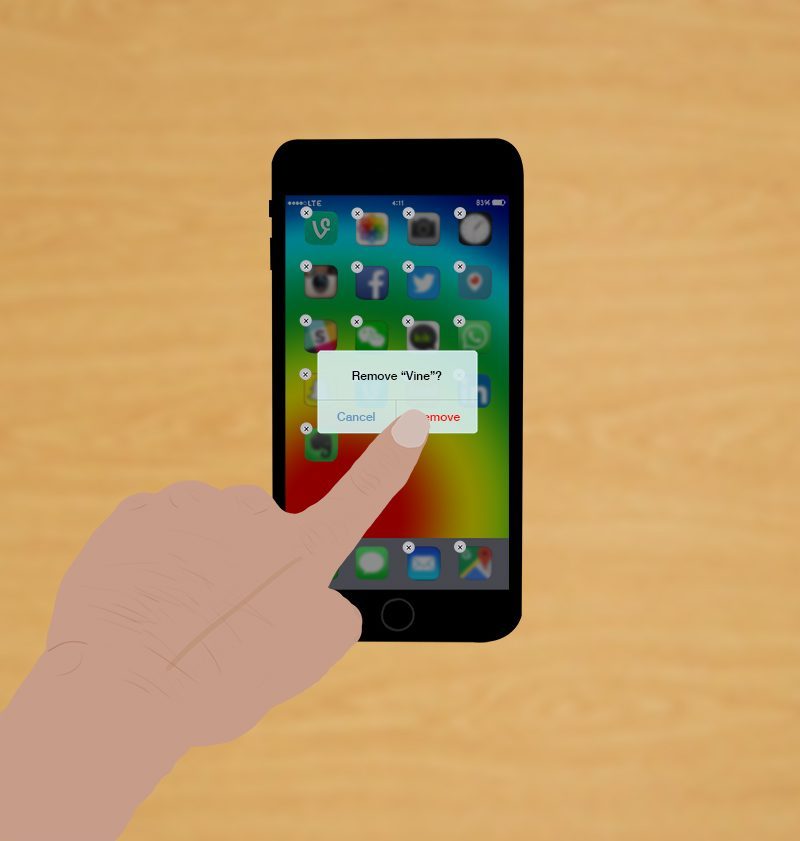Beloved social media application, Vine, comes to a tragic end


If you’ve never made one, you’ve definitely spent hours scrolling through them. Vine was one of the most popular video sharing services that left people wondering where the time went. To think looping six-second videos could take up so much time, Vine reinvented the concept of delivering content through lengthy videos.
For being so short, in both video length, as well as the app’s lifespan, Vine came and went quickly — leaving behind a strong influence on users, slang, pop culture and unfortunately stereotypes.
It began in Florida with Dom Hofmann, Rus Yusupov and Colin Kroll back in June 2012. Twitter acquired Vine by October 2012 for $30 million dollars and it was officially launched as a free app for iOS devices on Jan. 24, 2013. By November 2013, the app was available for Android and Windows devices.
Within the first couple months of being launched, Vine became the most used video sharing app available and the most downloaded free app in the App Store. By May 2014, a web version of Vine was available as a new way to explore the looping six-second videos and soon an Xbox One version.
With all these releases, and a growing social media community, Vine updated their app with features like loop counts, “Snap to Beat” for perfect music playing loops and added video attachments for up to 140 seconds. Due to the growth rate of members of the Vine community, the company launched a secondary app, Vine Kids, in January 2015, to cater to their youngest community members.
On Oct. 27, 2016, Twitter announced the discontinuing of the mobile app, Vine.
Sticking with its theme of short timespans, Vine came and went in a matter of four years, leaving hilarious videos and opening up opportunities for many of its members.
“While the brand is going away, the service isn’t. You’re just not allowed to upload to Vine anymore,” Jeremy Hunsinger, director of cultural studies at Laurier, said.
As a supposed silver lining to the entire ordeal, current users will always be able to look back at the great memories and trends it created.
With Vine as an outlet, “Viners” gained huge fame and success, allowing them to pursue other entertainment positions. Andrew B. Bachelor, otherwise known as King Bach, is notably the most followed person on Vine. His viral success led him to the United Talent Agency which allowed him reoccurring entertainment opportunities despite the fall of Vine. Other popular “viners” include Jerome Jarre, Marcus Johns and Cody Ko.
Not only did Vine influence popular culture by introducing comedians like King Bach into the entertainment sector, it also created and popularized slang we all use today. Terms like “on fleek” is an example that people in the online beauty community have adopted as a way of describing well-groomed eyebrows. It was created by Peaches Monroe, but popularized by Ariana Grande, and is now being used by the entire beauty community to this day. Other words popularized through Vine include “bruh” and “or nah”.
“Unless you become a habitual user and your friends are using it, it sort of fades to memory. I think that’s happening with Vine, too. The user base changes and interests change,” Hunsinger said.
The social media cult presence of Vine could have prevented users from seeing how niche the market had become. Vine left its heyday of being the top downloaded app for phones and some just couldn’t see that coming.
Though Vine brought a lot of positive influence into the world of popular culture, it also brought some negative stereotypes. Many of the humorous Vines display stereotypes, hugely focused on racial stereotypes.
Viners like “Dem White Boyz” and “Zane and Heath” perpetually created Vines drawing on stereotypical symbols that clearly identified them as mocking African American characters by using stereotypical names, such as “Tyrese,” “Latoya” and “Tyrone.”
This form of humour is Black Face without the makeup, which in turn, shows that society has yet to dismantle these racial stereotypes. Instead of completely removing these, society has only altered and reinvented ways to fit humour like this into current societal context. Vine acted as the outlet to do so.
Aside from racial stereotypes, Vine also gave way to sexist controversy, as it birthed Nash Grier’s fame.
Famous through his Vine account, Nash Grier posted a controversial sexist Youtube video titled: What Guys Look for in Girls. This received major backlash and perpetuated the already high social standards girls have to abide by to gain any recognition from a romantic counterpart.
Vine created an outlet for everyday people to become viral, leading to great social influence. Unfortunately for Vine, this outlet was also used by those with bigoted opinions.
As Vine slowly vanished from the top of the App Store, users were left scrambling for where to get their next short-form video entertainment. Twitter and Instagram have already risen in producing new social media trends such as #MannequinChallenge.
“[Twitter] wants to capture the market they have with Vine, so basically what they’re doing is forcing people to migrate over to twitter video,” Hunsigner said.
This comes as no surprise, as Twitter generates only a modest amount of money and competing against itself would require more investment in providing support. The decision to sell Vine may have been unnecessary, as Twitter could easily have integrated the valuable intellectual property into its platform to be unveiled in the future.
One chapter of our social media experience has come to a close and for a lot of us it’s the first time. This could be our MySpace. Through both the positive and negative influences, Vine has left its mark on the technological sphere. For all we know, Twitter could integrate Vine’s most appealing attributes into its platform in the future.
But until then, RIP Vine.


